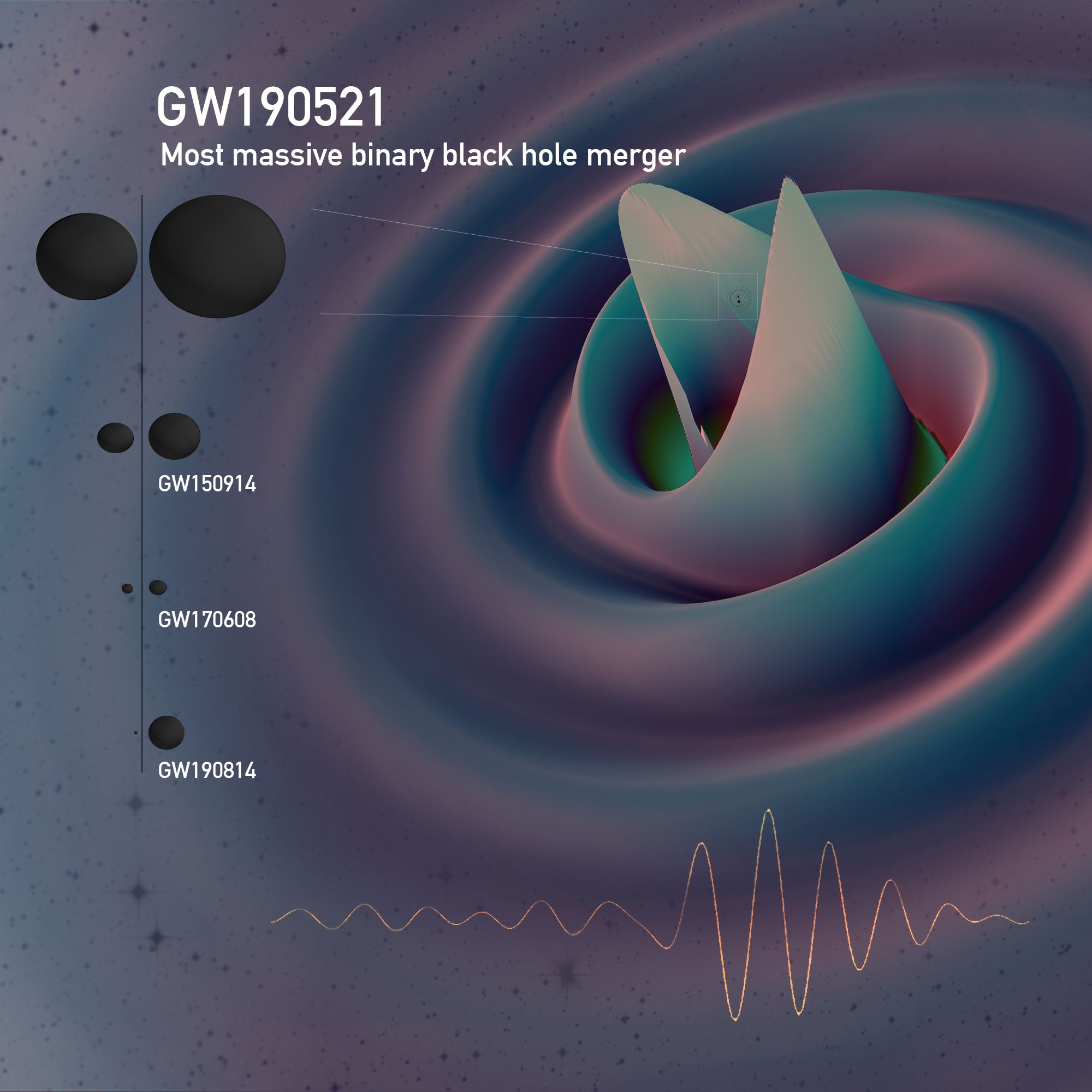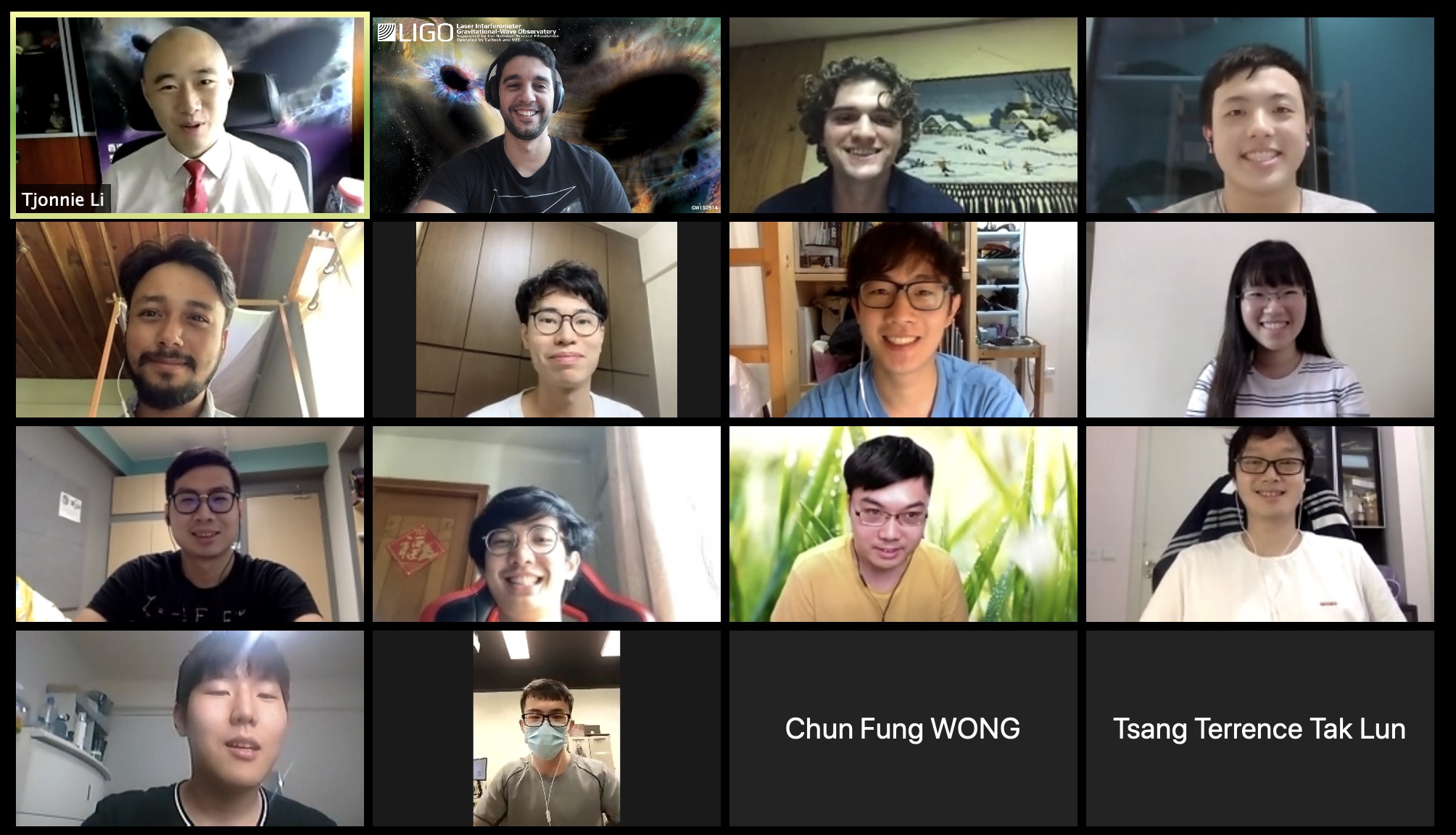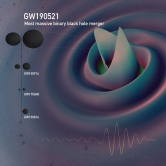News Centre
LIGO and Virgo Detect Gravitational Waves Produced by the Most Massive Black Hole Collision ever Observed CUHK the Only Institution in Hong Kong Involved in the Project
The Laser Interferometer Gravitational-wave Observatory (LIGO) Scientific Collaboration and the Virgo Collaboration (Virgo) announce the detection of gravitational waves from the spectacular collision of two black holes with “forbidden” masses. This marks the first time an intermediate-mass black hole has been observed. Two papers about the event, known as GW190521 have been accepted for publication today in the journal Physical Review Letters and The Astrophysical Journal Letters. Professor Tjonnie Li and Professor Juan Calderon Bustillo of the Department of Physics at The Chinese University of Hong Kong (CUHK), lead the only group in Hong Kong involved with the work of LIGO, and have been deeply involved in the analysis of this signal.
Black holes are regions of space-time from which nothing can escape. These are so dense that a black hole with the mass of the Sun would have approximately the size of Kowloon. The collision of two black holes produces ripples in space-time known as gravitational-waves, predicted by Einstein more than 100 years ago. Since 2015, the Advanced LIGO and Virgo detectors have observed the collision of dozens of black hole mergers, allowing us to study how these objects populate the Universe and how they form.
The first observation of an intermediate-mass black hole
To date, we have known about two different populations of black holes. First, there are black holes a few times the mass of the Sun, like the ones observed by Advanced LIGO and Virgo. These are thought to be the “corpses” of stars that collapse under their own gravity at the end of their lives, once they run out of fuel. Second, supermassive black holes with up to billions of times the mass of the Sun, hide in the centre of most galaxies, including our own Milky Way, waiting to feed from anything getting too close to them. How such cosmic titans form is still an unresolved enigma. As a possible solution, scientists have long conjectured the existence of a third, intermediate family of black holes that has so far remained elusive. The detection of GW190521 represents the first ever observation of such a mysterious object.
The detailed analysis of the Advanced LIGO and Virgo GW190521 signal indicates this was produced by the fusion of two black holes of approximately 85 and 66 times the mass of the Sun. This produced the first ever detected intermediate-mass black hole, a creature with 142 solar masses. The remaining 9 solar masses were converted to gravitational waves in a few tenths of a second, making this event more luminous than the whole observable Universe.
Stellar Archeology using Black Holes
Professor Calderon Bustillo said, “This is one of the most exciting but also shocking discoveries Advanced LIGO and Virgo have made. We have observed the first ever intermediate-mass black hole. However, it also comes with fascinating challenges and enigmas. Similar to the skeletons of dinosaurs, black holes allow us to do stellar archaeology, helping us to understand how stars live and die.”
However Professor Li says, “If our understanding of stellar evolution is correct, then the black holes that we think collided are too massive to form from the collapse of a star. This may indicate that these black holes were the product of previous black-hole fusions. This is very interesting because this is one of the ways we think that supermassive black holes may form.”
Testing Einstein’s Theory and Other Explorations
Black hole fusions are usually divided in three stages that produce characteristic signals. First, the two black holes slowly inspiral into each other. Second, the two black holes merge producing a newborn, distorted black hole. Finally, this black hole settles to its final form emitting a characteristic signal known as ringdown. “In a way, this is very similar to the signal emitted by a ringing bell, and allows us to know the properties of the final black hole. The ringdown, which is particularly clear in this signal, also allows us to put Einstein’s theory of gravity to the test. Once again, the signal shows no inconsistencies with Einstein’s theory,” said Professor Li.
However, it is not completely clear how this final black hole was formed. Professor Calderon Bustillo said, “While we always assume these signals are produced by inspiraling black holes that merge to form a newborn black hole, this event is so massive that we cannot clearly observe the signal produced before these black holes merged. Instead, we mostly observe the gravitational waves emitted once the final black hole was formed, so that we cannot be 100% certain about what happened before the fusion. This is itself very exciting as it will allow us to explore alternative, more exotic scenarios to explain how this final black hole formed.”
LIGO
LIGO is funded by the NSF, and operated by Caltech and MIT, which conceived of LIGO and led the Initial and Advanced LIGO projects. Financial support for the Advanced LIGO project was led by the NSF with Germany (Max Planck Society), the U.K. (Science and Technology Facilities Council) and Australia (Australian Research Council) making significant commitments and contributions to the project.
More than 1,200 scientists and some 100 institutions from around the world participate in the effort through the LIGO Scientific Collaboration, which includes the GEO Collaboration and the Australian collaboration OzGrav. Additional partners are listed at http://ligo.org/partners.php
Virgo Collaboration
The Virgo collaboration consists of more than 280 physicists and engineers belonging to 20 different European research groups: six from Centre National de la Recherche Scientifique (CNRS) in France; eight from the Istituto Nazionale di Fisica Nucleare (INFN) in Italy; two in the Netherlands with Nikhef; the MTA Wigner RCP in Hungary; the POLGRAW group in Poland; Spain with the University of Valencia; and the European Gravitational Observatory, EGO, the laboratory hosting the Virgo detector near Pisa in Italy, funded by CNRS, INFN, and Nikhef.



